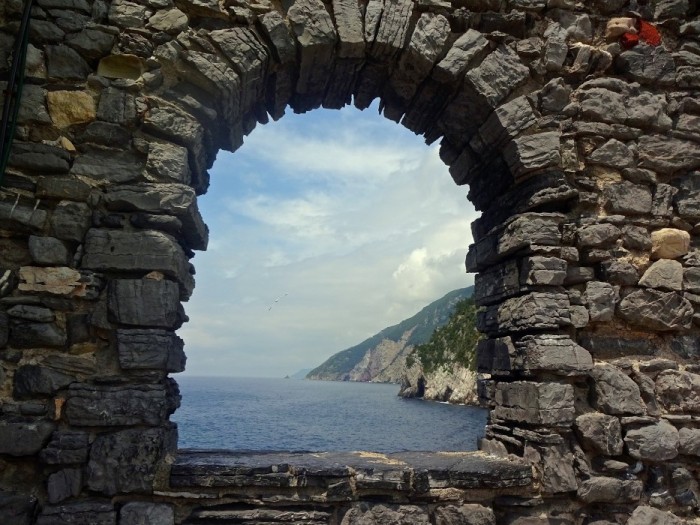A peek at Puglia.
Bari, Italy With weather becoming a problem again, we pulled Berkeley East into a marina, rented a car and did a...

On our way to the famous Cinque Terre, we discovered Portovenere, a small jewel on the Gulf of The Poets. Despite being a UNESCO World Heritage site, this lovely seaside medieval town is often missed by the millions of international tourists that visit the area.


The Cinque Terre, is a historic, rugged section of coast on the Italian Riviera. Monterosso, Vernazza, Corniglia, Manarola and Riomaggiore are five picturesque villages that, along with the stunning surrounding landscape, create the Cinque Terre National Park.

We had a plan to put Berkeley East on a mooring off Vernazza to enjoy the sight of the colorful town. Given that Cinque Terre is a national park, anchoring is prohibited but a small network of moorings has been installed for boats under 25 meters; BE is just under 17 meters.
We spotted the little white moorings in the distance; they looked more like seagulls than mooring balls strong enough to hold Berkeley East’s 36 tons. But this was probably by design, so as to not mar the beautiful seascape of Vernazza. We selected a mooring in the front and lined BE for the grab. We calculated the breeze, slowed the engine and glided up to the ball. It was like a well-performed ballet, everything went perfectly and we were secure in just moments.
Soon we heard an Italian voice, a man in a service boat was speaking very urgently. We quickly realized that he was telling us we had to move, that there was not enough space for the beautiful American boat. He directed us to another mooring ball on the outside. Our second, third and fourth attempts to capture two other mooring balls were not as pretty as the first, but we finally settled in with a wonderful vantage point of Vernazza.

Over the centuries, people have carefully built terraces on the vertical terrain in Cinque Terre, close to the sheer cliffs that overlook the sea. It is estimated to have taken about 200 years to construct the stonewall network that rambles through the five villages. Its total length is thought to be at least equal to that of the Great Wall of China.

Part of the charm of the Cinque Terre is the lack development. Paths, trains and boats connect the villages, and cars cannot reach them from the outside. In the past, the locals lived off vineyards and olive cultivation; today tourism is also a big commodity, so we weren’t surprised to see the constant stream of day-tripper boats. But being on the water, we were not impacted by the visitors on shore and we were looking forward to a peaceful afternoon afloat. Our tranquility was short lived with the arrival of Italian powerboats, large and small. It turned out that it was an Italian holiday and everyone was out on the water to appreciate the Cinque Terre.

By nightfall, Berkeley East was the only boat left, but for a few fishing skiffs. We enjoyed the sunset and a quiet night. As we were preparing to depart the next morning, the Guardia Costa pulled alongside BE and asked if we had a permit to be on the mooring. We said that we did not realize a permit was needed, but that we were leaving anyway. The Guardia Costa captain said, “No, impossible, you cannot leave” and then asked for our boat papers and passports. We fetched the papers and the Guardia Costa drove off, promising to be back. We wondered if we would end up in jail with Russian prostitutes. When they returned 30 minutes later, they asked us to sign a form, which essentially said that we did not have a permit to be on the mooring. We braced ourselves for the amount of the fine, but they simply gave us a copy from the official, triplicate form. We apologized for our ignorance, saying we just wanted to admire their lovely village. They all smiled, nodding their heads in agreement. And then the Guardia Costa captain said, “I’m sorry, but you have to leave.”